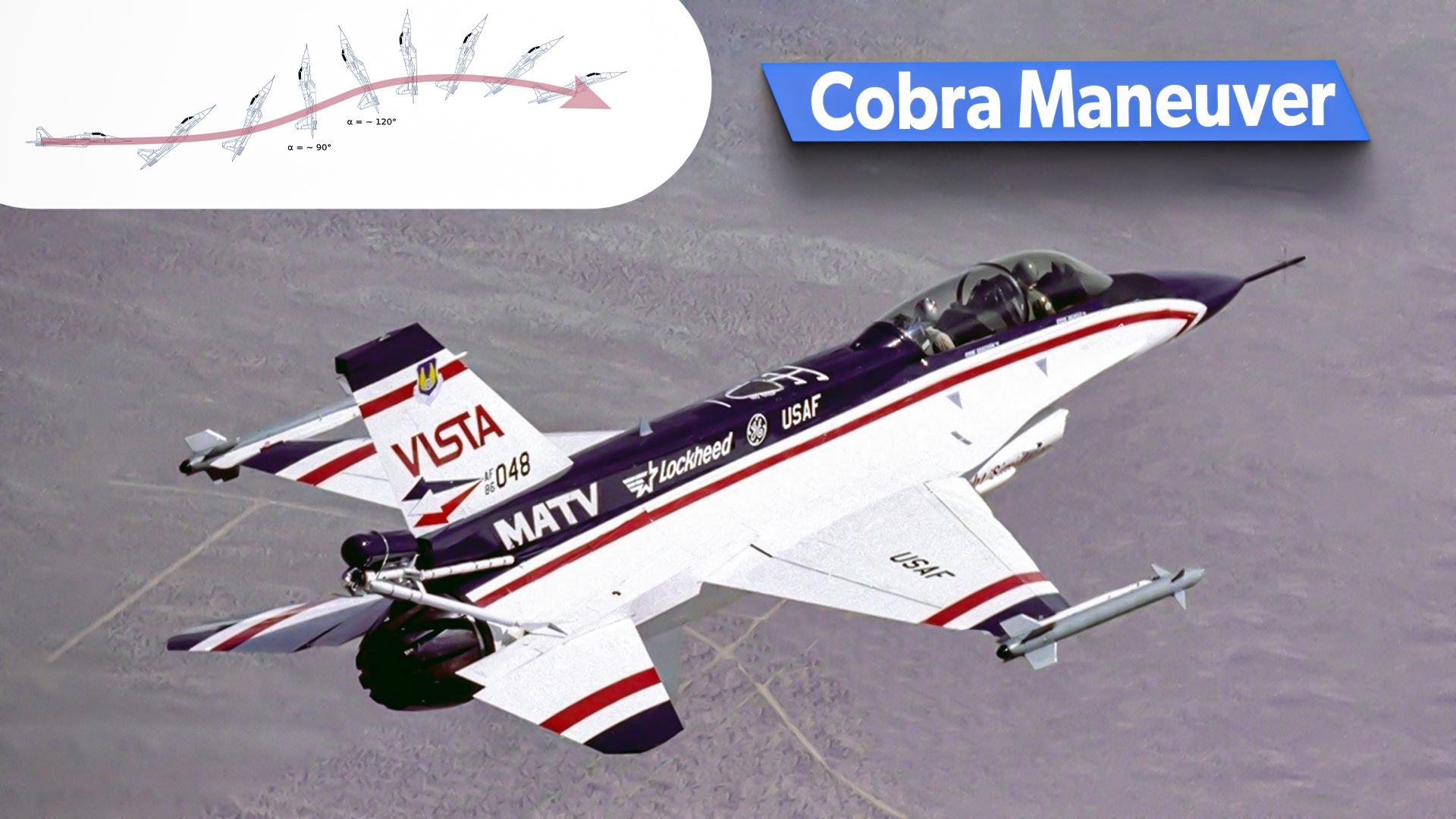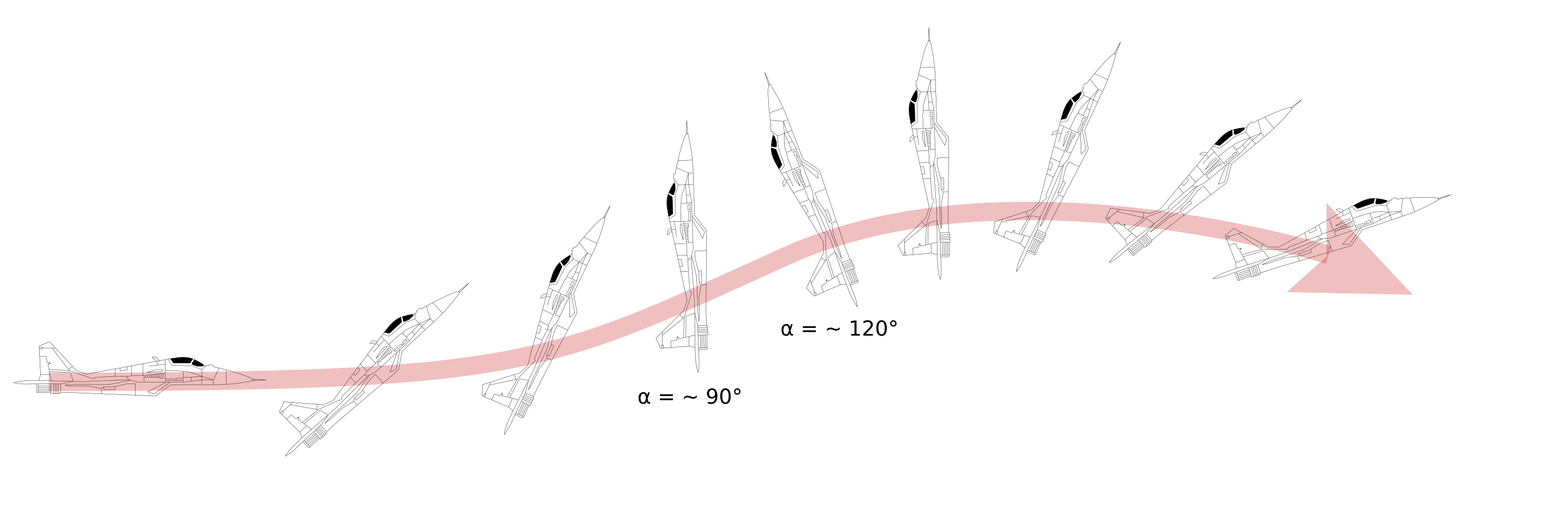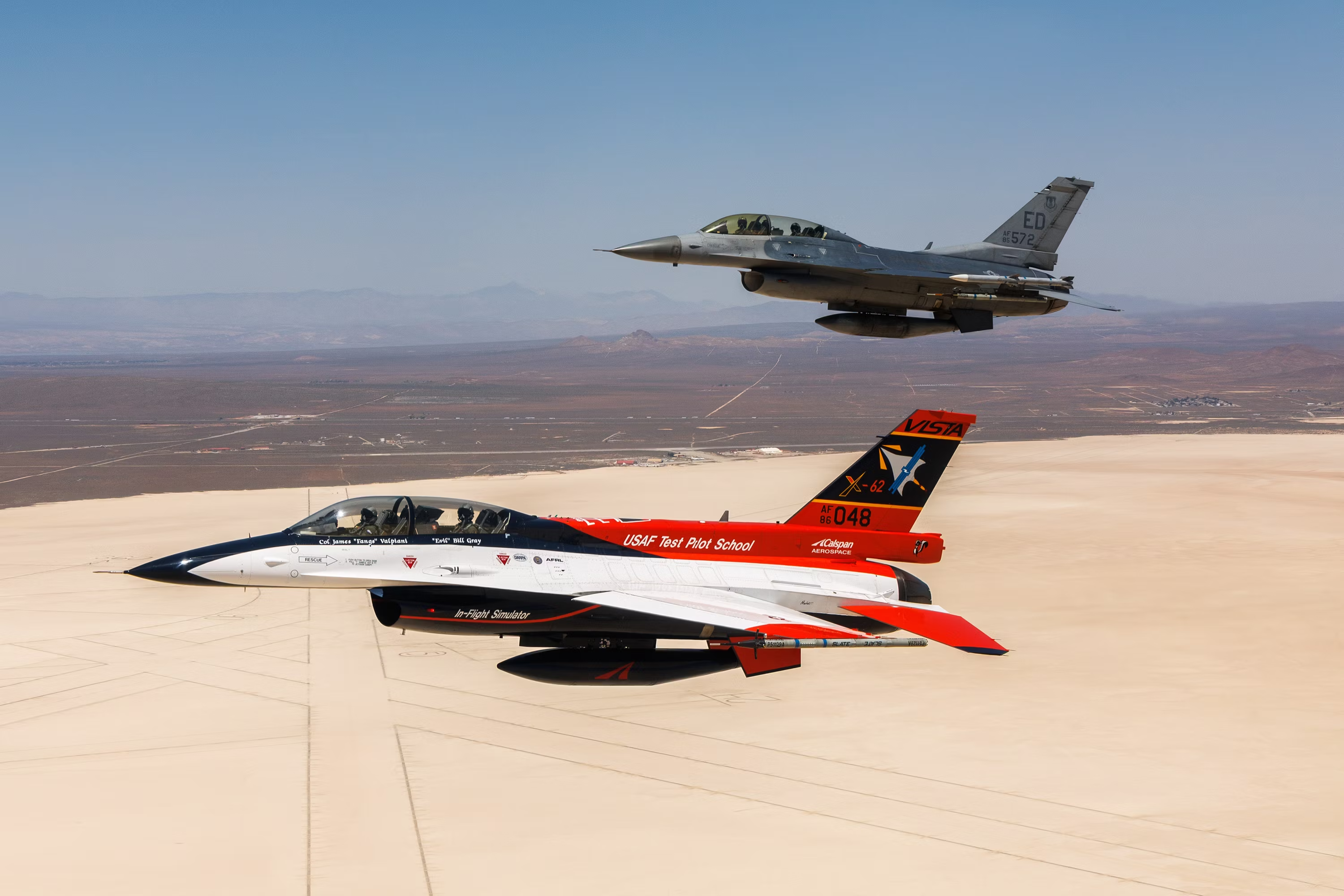The cobra maneuver, also known as the dynamic deceleration of aircraft, is an occurrence of an abrupt raising of the aircraft nose to a vertical position, momentarily putting the aircraft into a stall. At the highest position of the nose, the aircraft momentarily performs a full-body airbrake before dropping the nose back into normal position and gaining lift. Notably, the aircraft does not lose or gain altitude during the maneuver, making it one of the most cherished aerobics maneuvers.
Military aircraft are designed to perform some of the most dramatic maneuvers to fulfill their combat missions. Whether it is a high-speed chase, a dogfight, or more precise maneuvering for stealth, military aircraft have the highest levels of agility. Can military aircraft perform maneuvers like the cobra maneuver? There are a number of military aircraft worldwide that can perform the cobra maneuver.
Can any United States Air Force (USAF) aircraft perform the maneuver? The General Dynamics X-62 VISTA is the only USAF aircraft to theoretically perform the cobra maneuver. This article explores the capabilities of the X-62 and examines why other agile military aircraft are not designed for such aerobic maneuvers.
The cobra maneuver
The cobra maneuver is an example of supermaneuverability where the aircraft changes its pitch angle so abruptly that no altitude is gained. Moreover, the loss of lift is obtained for a minuscule amount of time that no altitude is lost. Interestingly, the complete maneuver is performed so briefly and precisely that the aircraft does not roll or yaw during the movement.
While the aircraft must be capable of handling an accurate pitch maneuver without overloading the airframe, it requires a highly skilled pilot to carry it through. While the cobra maneuver is generally showcased at airshows and highly specialized flybys, those can be performed during combat as a last resort to ditch the chasing aircraft in close-range air combat. The cobra maneuver may be performed in the hope that the chasing aircraft may overshoot.
The USAF X-62A
- Crew: 2 (pilot and safety pilot)
- Length: 48 ft 7 in (14.8 m)
- Wingspan: 32 ft 2 in (9.8 m)
- Height: 15 ft 9 in (4.8 m)
- Empty weight: 18,238 lb (8,273 kg)
- Gross weight: 26,463 lb (12,003 kg)
- Max takeoff weight: 42,300 lb (19,187 kg)
- Powerplant: 1 × General Electric F110-GE-100 afterburning turbofan, 16,600 lbf (74 kN) thrust dry, 28,200 lbf (125 kN) with afterburner
- Maximum speed: 1,170 kn (1,350 mph, 2,170 km/h). At sea level: Mach 1.2 (915 mph, 1,460 km/h). At altitude: Mach 2+
- Ferry range: 2,800 NM (3,200 mi, 5,200 km) with 3× 370 US gal (1,401 L) drop tanks
- Service ceiling: 50,000 ft (15,000 m) +
- Rate of climb: 50,000 ft/min (250 m/s)
The General Dynamics C-62 VISTA is the only aircraft (demonstrator) in the US that can theoretically perform the cobra maneuver. The experimental aircraft is derived from the F-16D Fighting Falcon, modified for experiments for the USAF. The aircraft was designed as part of the joint venture between General Dynamics and Calspan with the System for Autonomous Control of Simulation (SACS).
Photo: USAF
The aircraft features a multi-axis thrust-vectoring engine nozzle, enabling greater active control in post-stall situations, such as the Cobra maneuver. The aircraft can retract pitch and yaw control at very high (vertical) angles of attack—something that traditional aircraft are unable to achieve. The aircraft is equipped with a specialized dorsal fairing that runs the length of the fuselage.
No other USAF aircraft can perform the cobra maneuver
F-35 Lightning II
- Crew: 1
- Empty weight: 29,300 lb (13,290 kg)
- Gross weight: 49,540 lb (22,471 kg)
- Max takeoff weight: 65,918 lb (29,900 kg) [478]
- Fuel capacity: 18,250 lb (8,278 kg) internal
- Powerplant: 1 × Pratt & Whitney F135-PW-100 afterburning turbofan, 28,000 lbf (125 kN) thrust dry, 43,000 lbf (191 kN) with afterburner
- Maximum speed: Mach 1.6 at high altitude, Mach 1.06, 700 knots (806 mph; 1,296 km/h) at sea level
- Range: 1,500 nmi (1,700 mi, 2,800 km)
- Combat range: 669 nmi (770 mi, 1,239 km) interdiction mission (air-to-surface) on internal fuel 760 nmi (870 mi; 1,410 km), air-to-air configuration on internal fuel[479]
- Service ceiling: 50,000 ft (15,000 m)
As mentioned in the previous section, only the USAF demonstrator aircraft can perform such a maneuver thanks to its design and configuration. While many other fourth- and fifth-generation aircraft in the USAF fleet are highly maneuverable, they are not designed for aerobics.
The combat mission requirements onboard most military aircraft, including stealth technology, limit the use of such maneuvers. While a USAF aircraft may achieve a cobra maneuver to trick the enemy, it loses sight of the enemy while all weapons face the sky, and the aircraft’s energy is temporarily lost. Moreover, such maneuvers always involve a safety risk where a mid-air collision can occur during combat.



![4173803 - F-35A Training [Image 5 of 8]](https://static1.simpleflyingimages.com/wordpress/wp-content/uploads/2024/09/4173803.jpg)